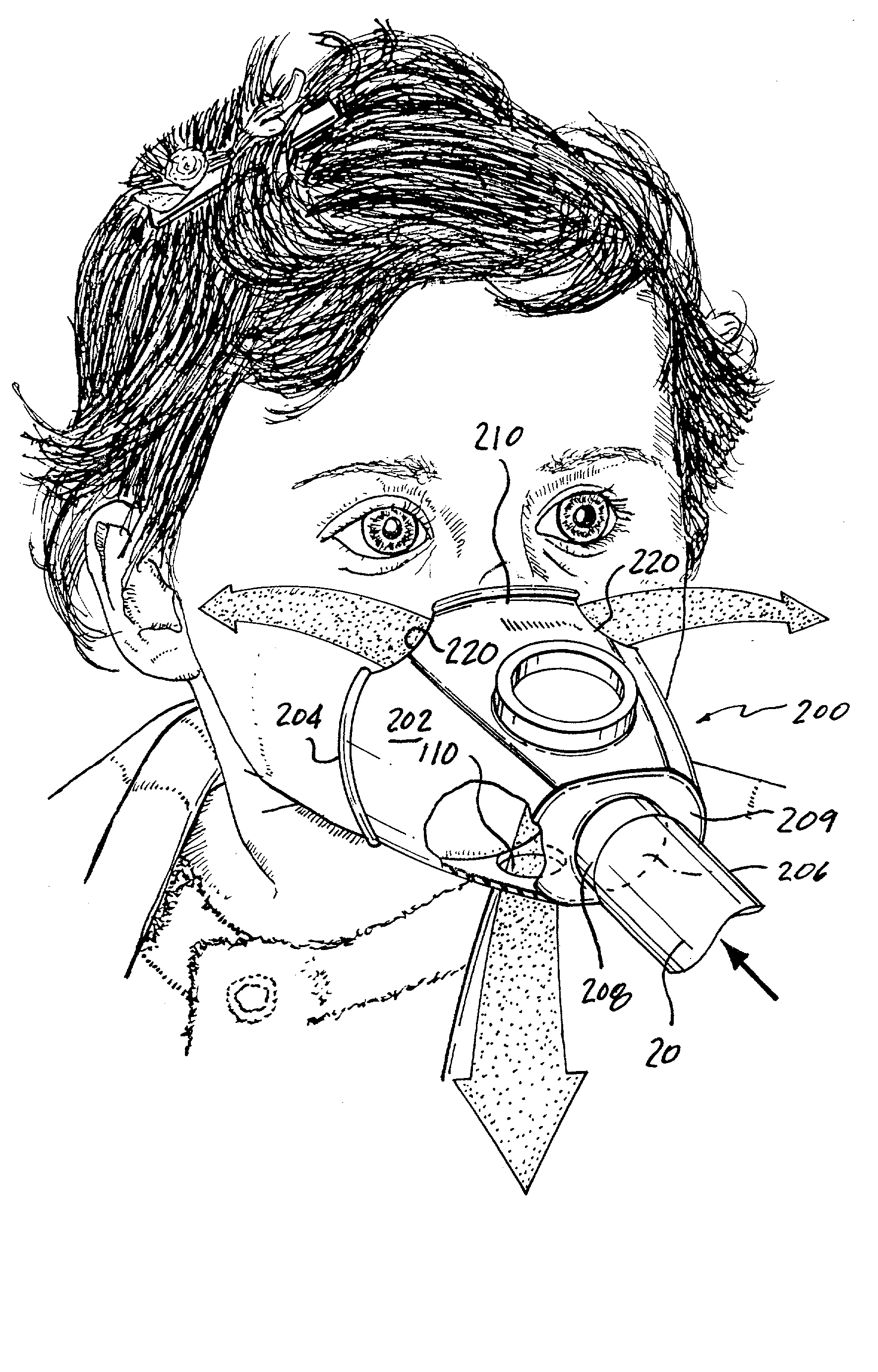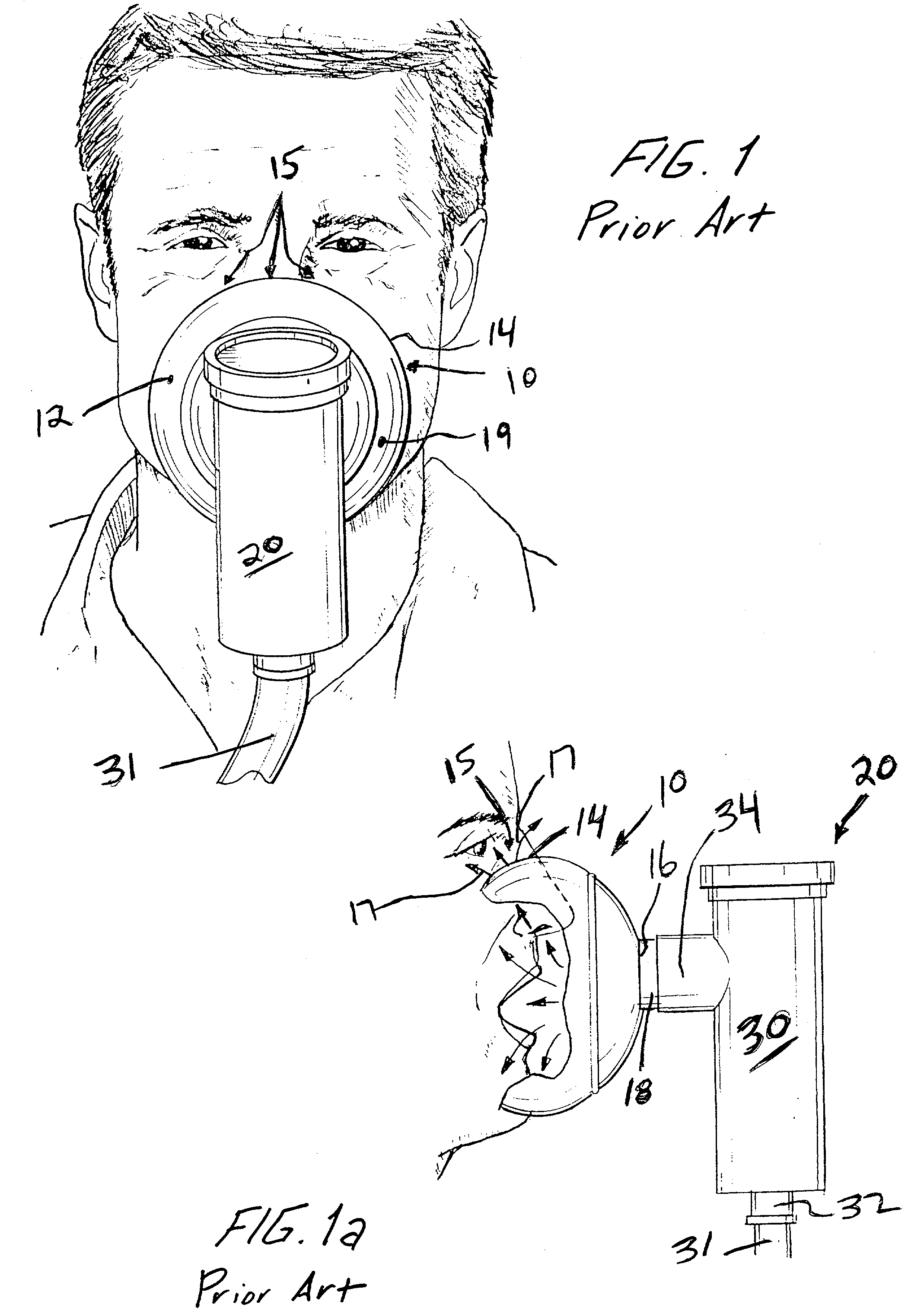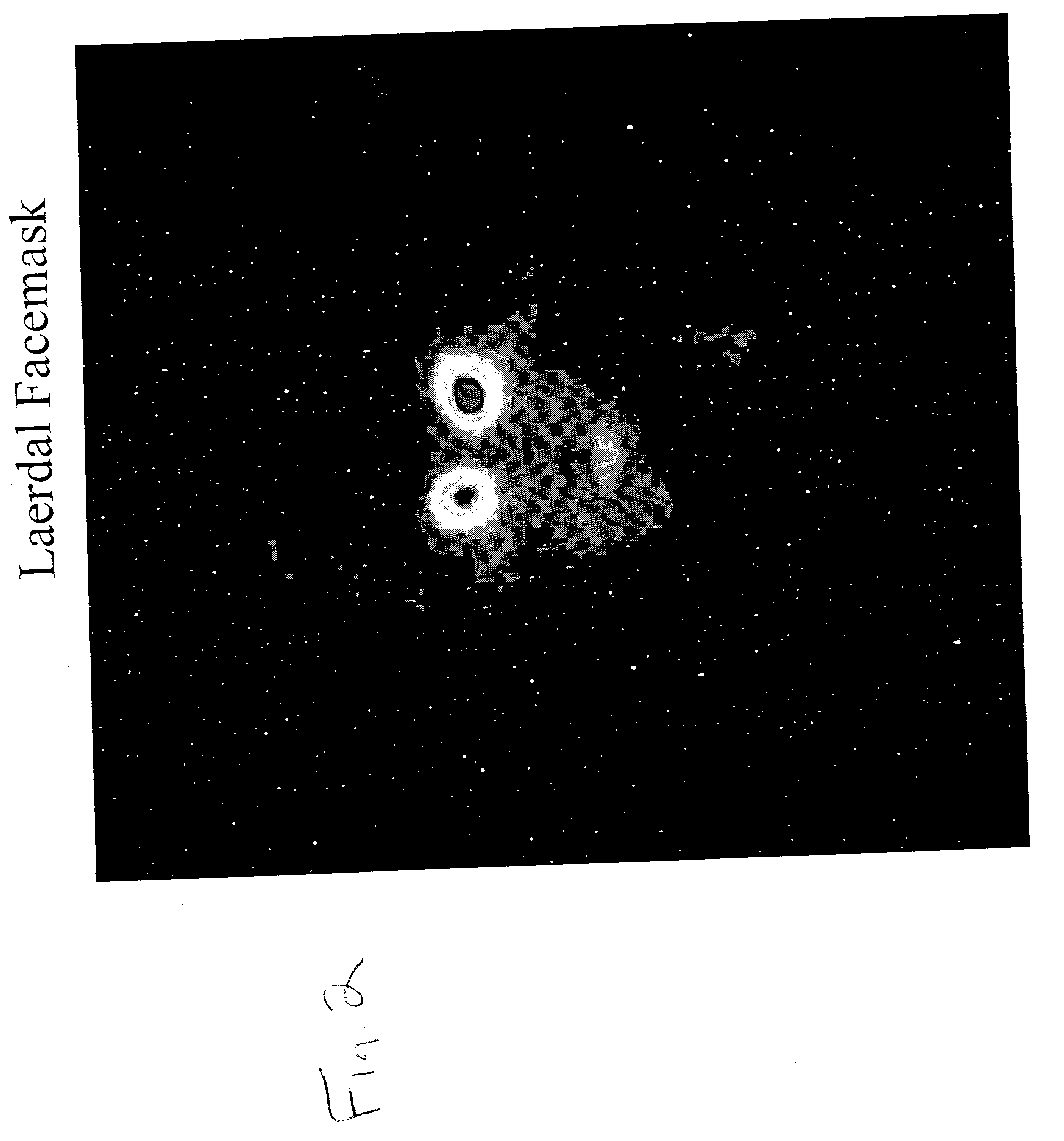Face masks for use in pressurized drug delivery systems
a technology of face mask and drug delivery system, which is applied in the field of masks, can solve the problems of increased drug deposition on the face, increased drug deposition and potential local side effects, and certain leakage areas
- Summary
- Abstract
- Description
- Claims
- Application Information
AI Technical Summary
Benefits of technology
Problems solved by technology
Method used
Image
Examples
first embodiment
[0042] FIG. 3 is a front perspective view of an exemplary face mask 100 according to a For purposes of illustrating the benefits of the present invention, the face mask 100 is of a similar construction as the face mask 10 with one exception, as explained below. The face mask 100 thus includes a body 102 including a peripheral edge 104 which is intended to engage a face of a patient. The body 102 defines a face mask reservoir in which the patient's nasal openings and mouth are in communication. The body 102 is typically made of a flexible material, such as a thermoplastic, e.g., PVC material. The thickness of the material and cross-section varies to allow different parts of the exemplary face mask 100 to carry out their normal function. Thus, for example, the face mask 100 is generally of a relatively thin material with the peripheral sealing edge 104 also being of a thin flexible construction so that it can flexibly engage the face of the patient. The body 102 has a central opening...
second embodiment
[0045] Referring now to FIG. 4, an exemplary face mask 120 is illustrated. The exemplary face mask 120 has a body 122 similar to the body 12 of the face mask 10 of FIG. 1 with the exception that the face mask 120 has a pair of eye cut-outs or vents 130 formed by removing mask material along a peripheral edge 124 of the body 122. The eye vents 130 are formed on each side of a bridge section 126 of the face mask 120. The bridge section 126 is the mask section that generally seats against the bridge of the nose and interfaces with the cheeks of the patient adjacent the nose. The illustrated eye vents 130 are formed at the peripheral edge 124 and extend inwardly therefrom so as to remove mask material along the peripheral edge 124 under the patient's eyes. Each of the illustrated eye vents 130 has a semicircular shape; however, the precise shape of the eye vents 130 is not critical. For example, the eye vents 130 can alternatively be formed to have more of a rectangular shape in compar...
third embodiment
[0053] FIG. 5 shows a face mask 140 according to a The face mask 140 is very similar to the face mask 120 of FIG. 4 with the exception that the eye vents 150 have been enlarged in comparison to the eye vents 130 of FIG. 4. For example, the face mask 140 has an inner surface area of about 110 cm.sup.2 and the eye vents 150 occupy an area of about 10 cm.sup.2; however, these dimensions are merely exemplary and not limiting since the eye vents 150 can occupy an area less than 10 cm.sup.2 as well as an area greater than 10 cm.sup.2. Once again, the eye vents 150 are formed in the region of the eyes and the eye vents 150 can be formed in any number of different shapes. The shapes of the eye vents 150 in FIG. 5 are merely exemplary in nature. In this particular embodiment using this particular type of face mask, the eye vents can occupy From about 5 cm.sup.2 to about 11 cm.sup.2; however, these dimensions can be varied outside of this exemplary range. For this exemplary range, the eye ve...
PUM
 Login to View More
Login to View More Abstract
Description
Claims
Application Information
 Login to View More
Login to View More - R&D
- Intellectual Property
- Life Sciences
- Materials
- Tech Scout
- Unparalleled Data Quality
- Higher Quality Content
- 60% Fewer Hallucinations
Browse by: Latest US Patents, China's latest patents, Technical Efficacy Thesaurus, Application Domain, Technology Topic, Popular Technical Reports.
© 2025 PatSnap. All rights reserved.Legal|Privacy policy|Modern Slavery Act Transparency Statement|Sitemap|About US| Contact US: help@patsnap.com



